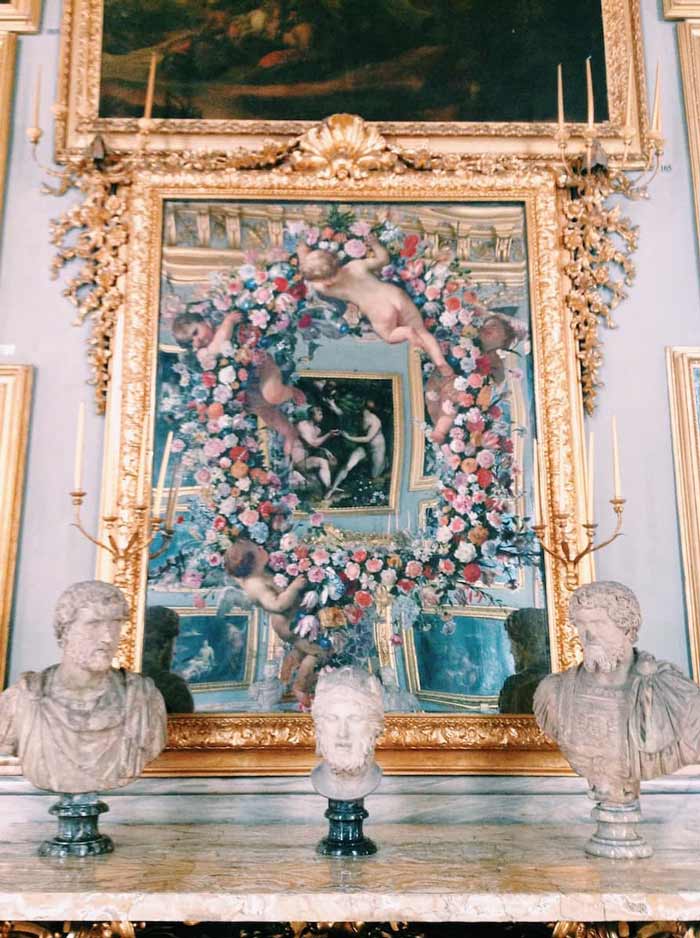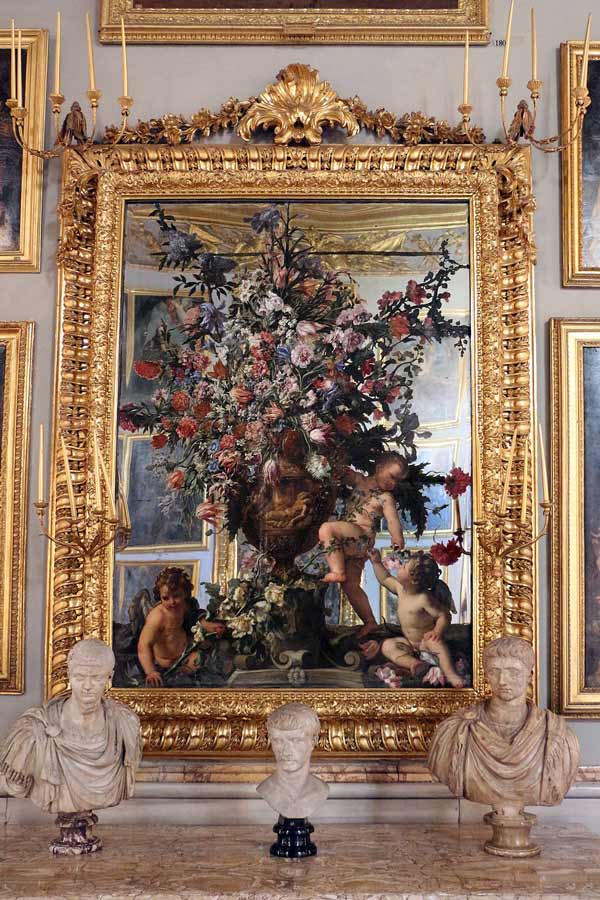C.1 "Mirror, Mirror on the Wall, Who’s the Fairest of Them All?"
Fri Oct 20 / 13:30 – 15:00 / KC 202
chair /
- Dijana O. Apostolski, McGill University
Inside the Palazzo Colonna in Rome are four large, tilted, magnificently painted mirrors. The mirrors bear flowers, insects, and mischievous putti from a realm other than the Palazzo’s. This is not unprecedented. Mirrors proliferated early modern Europe and insidiously shaped interiors, spaces, habits, and bodies. According to thinkers, such as Marsilio Ficino (1433–1499), mirrors, as delicate matter, faithfully emulated the spiritual realm and the soul. As such, they were often used as silent organizers of societal, gendered, and racialized norms that framed embodiment as a representation and the body as an image. This session seeks to probe our historical understanding of the relationship between mirrors, bodies, art, and architectural practices in the early modern context. It aims to examine how early modern European art and architectural theories and practices, expressed through writing, collecting, drawing, painting, modelling, and building, shaped and were shaped by the presence and design of mirrors.
keywords: early modern mirrors, the humoral body, matter, materiality, representation in art and architecture
session type: panel
Dijana O. Apostolski (B.Sc. Arch. 2010, MPhil. 2014, MArch. 2016) is a doctoral candidate at the Peter Guo-hua Fu School of Architecture, McGill University. Her research critically re-examines conventional premodern European architectural histories, narratives, and protagonists. She is currently working on Michelangelo’s architectural drawings and design practice positioned at the intersection of architectural history and the histories of medicine and the humoral body. At McGill, her research is supported by the McGill Engineering International Doctoral Award, the Peter Guo-hua Fu Graduate Award, and the Schulich Graduate Fellowship. More broadly, Dijana’s research focuses on premodern histories of the body, gender, whiteness, and racecraft in relation to architecture. In 2021 she was a doctoral fellow at the Canadian Centre for Architecture (CCA) in Montreal, where she investigated spatial constructions of whiteness in premodern Italian villas and treatises on villas.

Mario de’ Fiori, Giovanni Stanchi, and Carlo Maratta, painters, One of the Four Painted Mirrors, the Colonna Gallery, Colonna Palace, Rome (1670).

Mario de’ Fiori, Giovanni Stanchi, and Carlo Maratta, painters, One of the Four Painted Mirrors, the Colonna Gallery, Colonna Palace, Rome (1670).
Epistemological Reflection: The Painted Mirrors in the Galleria Colonna in Rome
- Şirin Luisa Datli, Heinrich Heine University Düsseldorf / The Bibliotheca Hertziana — Max Planck Institute for Art History
Four large painted mirrors adorn the Galleria Colonna in Rome. Completed in 1670 by Carlo Maratta, Mario de' Fiori and Giovanni Stanchi, they reflect the Galleria’s candlelight, gilding, marble and numerous paintings, thus increasing the splendour of the gallery space. Two of them show relief vases with lush bouquets of flowers inside. Small putti animate the still life, as they also do in the other two painted mirrors, where they hold large flower garlands. In my paper, I want to point out an aspect of the painted mirrors, which adds to the (undoubted) effect of magnificence and the representative function. I do not see the mirrors solely as a means to better distribute light or to multiply the gallery's sumptuous décor, but in their function to initiate epistemological reflection. My argument is that the painted mirrors, which are neither just mirrors nor just images, are related to a new interest in the 17th century in the questions of seeing, perception, and cognition. By confronting the beholder with both a painted surface and the reflection of the mirror, the traditional pictorial concept of mimesis and perspective is challenged. Through this disruption of the pictorial illusion, the process of perception is revealed and the image as a medium of insight is put to the test. At the same time, doubts are sown: what can images actually demonstrate and can they be reliable? This paper shows how the painted mirrors in the Galleria Colonna pose questions regarding art theory and the status of visual representation and invite the beholder to reflect on those aspects through their specific medial qualities.
keywords: mirrors, art theory, 17th century, epistemology
Şirin Datli studied Art History and Social Sciences at the Ruhr University in Bochum. During her studies, she worked as an assistant in the department of Art History and did an internship at the Bibliotheca Hertziana in the editorial and public relations department. The final thesis about Sofonisba Anguissola’s self-portraits was written during a stay at the Kunsthistorisches Institut in Florenz (Max Planck Institute), funded by the "LabExchange" programme of the University of Bochum. In Florence, she was subsequently a scientific assistant in the Minerva Research Group "The Nomos of Images. Manifestation and Iconology of Law”. From 2019 to 2022, Şirin Datli worked as a research and teaching assistant at the Institute for Art History at Heinrich-Heine University Düsseldorf. Since April 2022, she is a Predoctoral Fellow at the Bibliotheca Hertziana – Max Planck Institute for Art History in Rome.
Specular Self-awareness: Between Gaze and Technique
- Renaud Gadoury, École normale supérieure / École des hautes études en sciences sociales
Far from the everyday object we now know, mirrors have long been one of the rarest and most expensive products available on the market. For centuries, Venice was the only center of production, enabling Venetian craftsmen to exert a decisive influence on pricing, which was kept at extremely high levels. Due to their prohibitive cost, mirrors remained for centuries the privilege of royal courts and the aristocracy. The 18th century marked a turning point in this respect. A conjunction of technical, economic and social factors led to a rapid increase in European mirror production, resulting in lower selling prices and a diversification of distribution networks. By the end of the century, mirrors had become an integral part of everyday life. The repercussions of their growing popularity were felt in fields as varied as astronomy, the cosmetics industry, literature, decorative arts, optics and philosophy. At once an object of scientific study, a literary motif, a perceptive tool and a social actor, the mirror is above all a reflexive device that catalyze a dialogue between consciousness and appearance, through which the two are brought together in a game of specular back-and-forth. This presentation seeks to explore intersections between the trajectory of the European mirror industry and that of pictorial self-consciousness, in order to investigate the hypothesis that the wider diffusion of mirrors, from the late 17th to the early 19th century, may have helped nourish a visual relationship to the self.
keywords: history of techniques, reflexivity, mirrors, self-consciousness, mediality
Renaud Gadoury is a researcher, author, and independent curator. He is currently studying at the École normale supérieure and the École des hautes études en sciences sociales, where he is undertaking research on the history of the reflection since the seventeenth century. He has collaborated with several institutions in both Canada and Europe, including the Galerie de l’UQAM, the Musée d’art de Joliette, VOX, the Pinault Collection, and the Palais de Tokyo. Situated at the intersection of aesthetic philosophy and the history of sensibility, his current transdisciplinary research explores the relationship of individuals to the built space.
